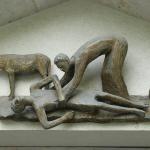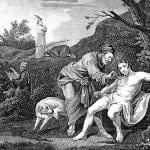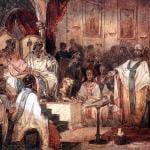Minneapolis, Minn., Aug 1, 2014 / 12:30 pm (CNA/EWTN News).- Archbishop John Nienstedt of Saint Paul-Minneapolis, facing calls for his resignation amid legal battles over the local Church's handling of clerical sex abuse, apologized Wednesday but refused to resign. “It comes down to this: 18 years ago, Pope John Paul II chose me to serve the Church as a bishop, an authentic successor of the apostles,” he wrote in a July 30 column at The Catholic Spirit. “A bishop’s role is more like that of a father of a family than that of a CEO. I am bound to continue in my office as long as the Holy Father has appointed me here.” “I have acknowledged my responsibility in the current crisis we face, and I also take responsibility for leading our archdiocese to a new and better day.” The column began noting that “to say this has been a difficult year is quite an understatement.” From December until March, Archbishop Nienstedt recused himself from public ministry while a claim he touched a male minor's buttocks was investigated; charges were not filed in the case. Last month, it was revealed that he has been the subject of sexual misconduct allegations involving adult males, including seminarians and priests. The archdiocese is among the defendants in a suit filed by a man who claims to have been abused as a minor by a former priest. In December, the judge in the case ordered the local Church to submit a list of all priests accused of abusing minors since 2004, and he deposed three bishops who have been associated with the archdiocese. A jury trial in the case is set for Sept. 22. On July 7, Jennifer Haselberger, who from 2008 to 2013 was chancellor of the Archdiocese of Saint Paul and Minneapolis, filed an affidavit in the case charging that while she was employed there, the archdicoese had a pattern of failing to deal appropriately with allegations of sex abuse made against clergy. Her testimony stated that when she raised concerns over sexual abuse allegations, she was dismissed and her suggestions ignored: “my concerns were ignored, dismissed, or the emphasis was shifted to what was best for the priest involved,” she wrote. Haselberger concluded her affidavit saying that she had long disagreed with calls for Archbishop Nienstedt to resign, on the bases of theology and that he had learned from his mistakes. “However, my opinion regarding the Archbishop's resignation has changed,” she said, citing the investigation of he himself for sexual misconduct and her doubt that he and his staff have been honest about the knowledge and handling of clerical sex abuse allegations. On July 26, The Star Tribune, a Minneapolis daily, published an editorial for the archbishop's resignation, saying he “cannot be a force for reform” in the archdiocese. “The continued presence of the embattled Nienstedt in the chancery increases the likelihood that those matters will impede the work of the church in the larger community. Deservedly or not, Nienstedt has become the face of a coverup that has put children in harm’s way,” the paper's editors wrote. “His credibility is in tatters. The archdiocese needs a different leader – a reformer – to have a reasonable chance of restoring its damaged reputation and sustaining its service to the community.” Fr. Thomas Berg, a professor of moral theology at St. Joseph's Seminary, tweeted July 29 calling it “a remarkably thoughtful editorial by a secular paper.” “I must agree: best for the Church that Bp Nienstedt resign,” the New York-based priest wrote. In his column, however, Archbishop Nienstedt stated his intention of remaining in service as Archbishop of Saint Paul and Minneapolis. He quoted the Lord's words to Jehosaphat, a ninth century B.C. king of Judah who was a reformer, as he was being attacked by a foreign alliance: “stop being afraid, and stop being discouraged because of this vast invasion force, because the battle doesn’t belong to you, but to God.” He wrote, “I have heard calls for my resignation since I arrived in this wonderful archdiocese seven years ago. I will continue to listen to those who express concerns about my leadership, but I will also continue serving as I have been called to do.” “I am devoted to serving this local Church, and I will continue to do so and to apply these hard lessons that I have learned over the past months. While it may be difficult to believe, the suffering we have endured is bearing much fruit in reform of practices and correction of decisions that were made in the past, either by me or my predecessors.” Archbishop Nienstedt mentioned his collaboration with priests, lawyers, communicators, the faithful, and the victims of sexual abuse and their families, as well as his prayer, though the scandals. “I can only speak for myself and my actions, not the words or actions of others,” he said. “Over the last year, I have re-examined the words I have spoken and the actions I have, or have not taken,” and he offered three points. First, he has created “a new leadership team that operates under the philosophy of 'Victims First.'” This consultative team “continually operate(s) from the perspective of how we can best help victims of sexual abuse and their families,” he said, adding that he will hire a victim's liaison. “'Victims First' has become more than a philosophy,” Archbishop Nienstedt stated. “It has become standard operating procedure.” The archbishop's second point: “I have never knowingly covered up clergy sexual abuse.” He added, however, that he has been “too trusting of our internal process and not as hands-on as I could have been.” He added that “while it is very clear that we did not handle all complaints the way we should have in the past, we are now doing all we can to make sure that we are living up to our commitment to be accountable, transparent, and are, in fact, providing safe environments for our children.” Finally, he said, he has “always been honest with the Catholics of this local Church.” He noted that he has asked for investigations of himself “because I had nothing to hide and wanted to be vindicated from false allegations, as anyone would.” He said he has “no doubt” that his “administrative and personal style, with its strong point of view, may have offended some. I apologize to those I have hurt. The last year has helped me realize I need to change my administrative style, soften my words, and get out from behind the desk to spend more time with the faithful.” “I am sorry for the distractions I have inadvertently caused that have taken the focus away from the challenging and rewarding work we do as the Catholic Church in our local community,” Archbishop Nienstedt said. “We must continue to address head-on the terrible scandal of clerical sexual abuse. It is apparent that this is the work of the Church we are called to address at this time.” He maintained that “the past 10 months” has prepared him and his staff “to lead this local Church through the present crisis to a much better place. The challenges are there, to be sure, but we are more ready to tackle them now than at any time in our past history.” “I regret that some have lost their confidence in me. I hope ultimately to win back that trust. As your shepherd, I promise to make changes in what we do so that we can see more clearly the work of God in our lives and grow closer to His Beloved Son and Our Savior, Jesus Christ.” Read more
















